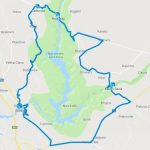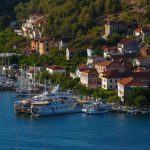As Poslovni Dnevnik/PD i VL native tim writes, a DNV GL study shows how changes in the use of different marine vessels can contribute to achieving CO2 reduction targets. This will require the use of zero-emission options, such as electricity and biofuels.
Croatia’s much loved Krka National Park is heading in this direction and has been constantly working to reduce any pollution produced there. In addition to the Krka National Park administration presenting a new ordinance according to which swimming is prohibited in almost the entire area of the park, at the beginning of last year, they also ordered two hybrid electric boats. This is another step towards sustainability. The capacity of the ships is 50 people, and the vessels are equipped with quality solar PV panels and batteries.
Everything actually works in a fairly simple way with these vessels, when the sun is shining, the solar cells power the drive, and when the sun disappears – the drive is powered by a battery. This means that working conditions will be met at any time of the year regardless of the amount of sunshine hours in the day. Krka National Park’s new electric boats operate reliably without producing any emissions, and can withstand a cycle of 8 hours when using the battery and 12 hours when using the energy obtained through the solar panels. The service speed is 5 knots and the maximum is 9 knots.
The boats were ordered with Danfoss technology, whose employees listened carefully to all of the wishes expressed and solved the technical challenges they faced on the way throughout the process, from desire to final realisation. As explained by Danfoss, the technical challenge with these electric boats was to achieve proper functioning between the solar PV panels and the battery within the powertrain system. Nevertheless, they managed to design and deliver the ideal solution in the end.
In doing so, they took into account the understanding of the needs of the ordered ships and the ability to handle advanced technology.
They also cooperated with the system integrator Inmel, providing all the necessary hardware and software for the green hybrid solution, and the ships were built at the Dalmont shipyard in Kraljevica.
A kind of precedent was set with the vessels, ans as such, for the first time, the MPPT software upgrade was transferred to the DC / DC software with the support of the system integrator and successfully tested. They provided maximum power point detection (MPPT) software implemented in DC / DC software. Such cooperation between Danfoss and Inmel enabled higher voltage on the solar panels, using only the highest voltage point, resulting in more energy on a common DC bus.
Krka National Park has thus shown that choosing the right partners is one of the most important moments in achieving sustainability goals.
For more, make sure to check out our dedicated travel section.










